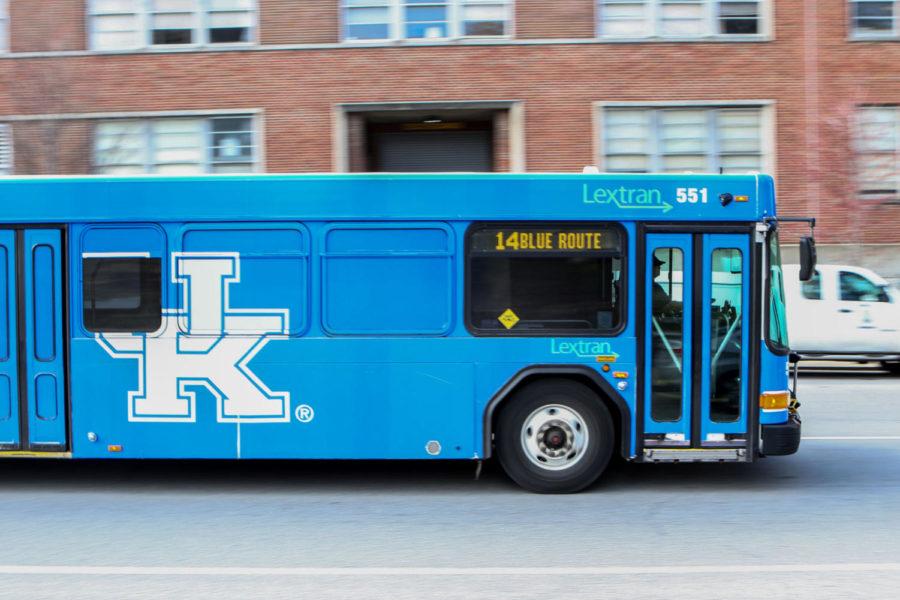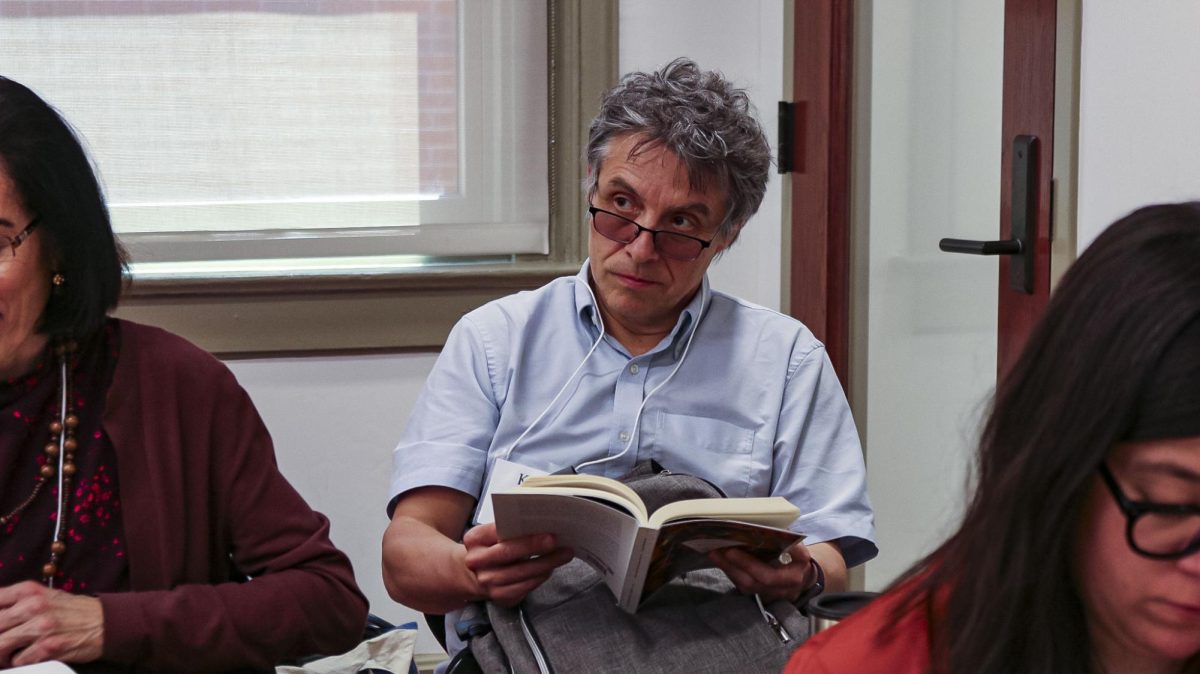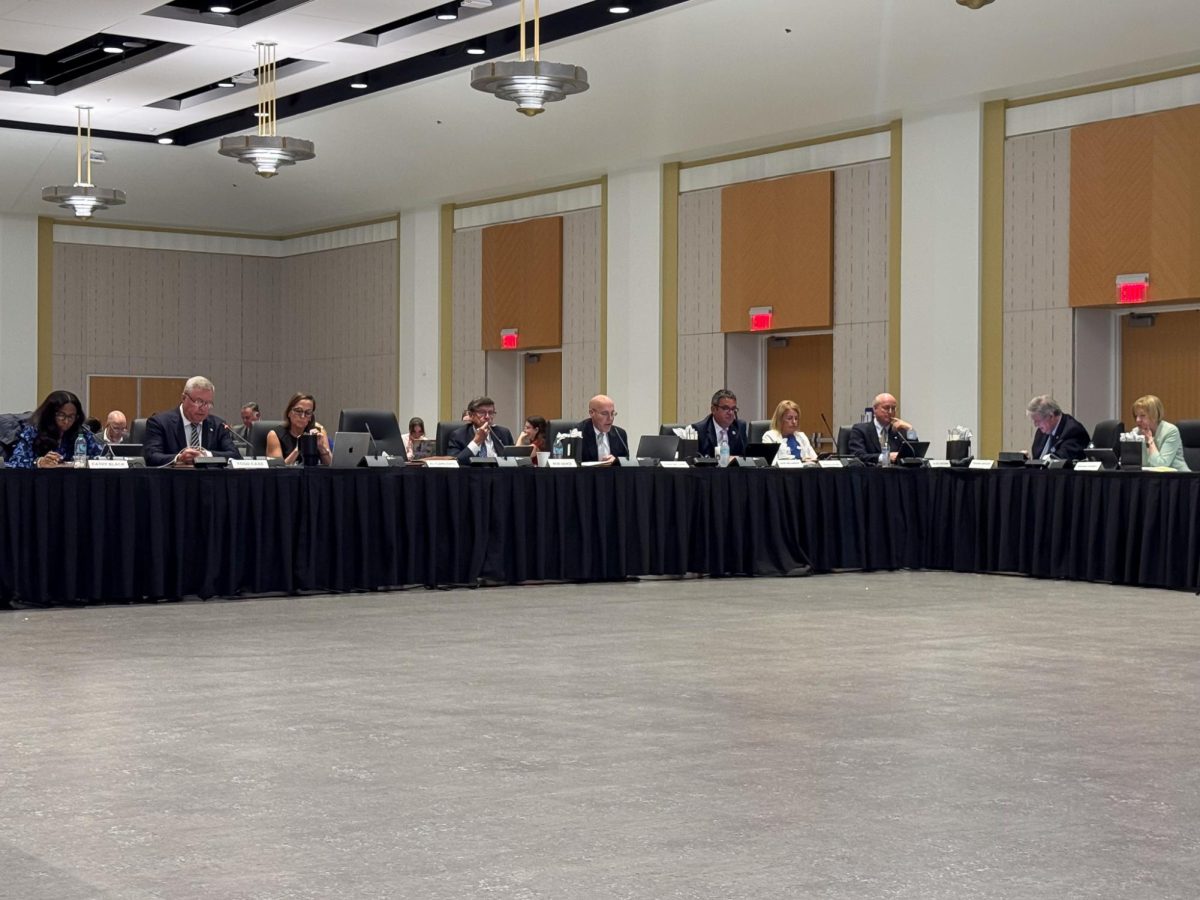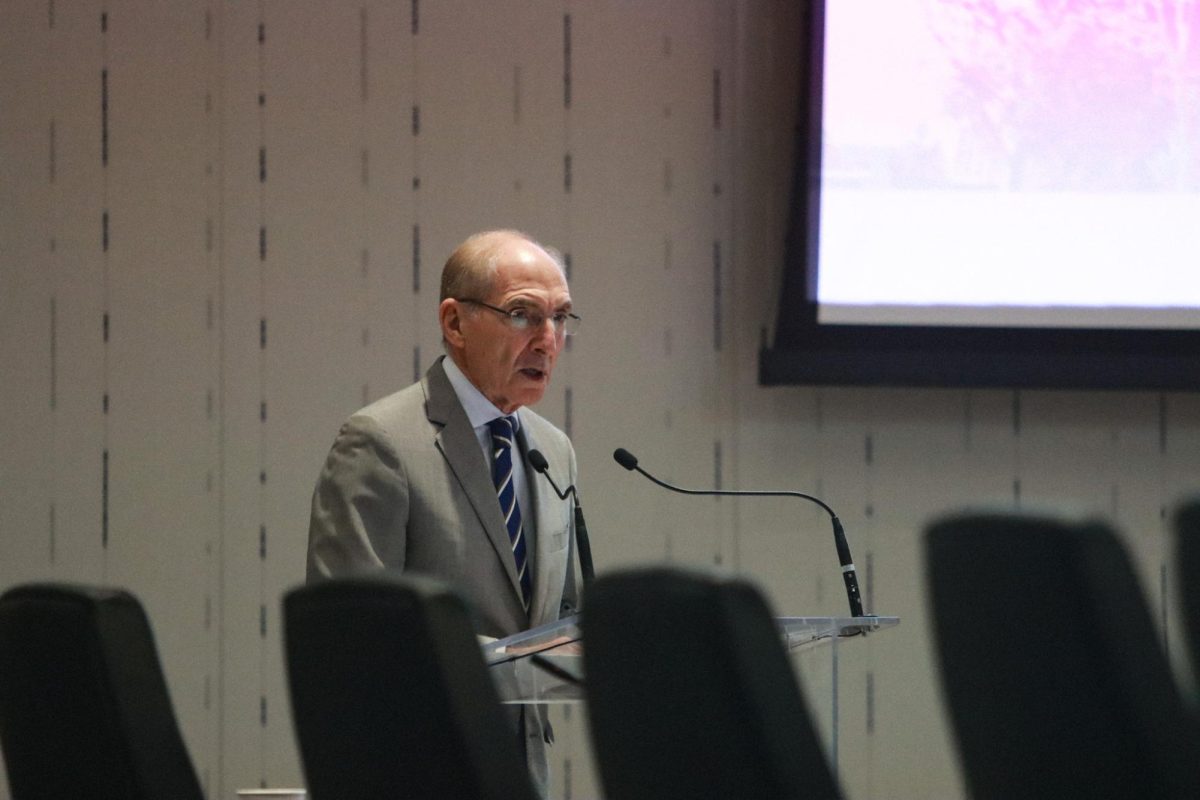“Now approaching the steps,” booms over the speakers.
The bus seats are filled with students and backpacks, professors and briefcases, healthcare workers with name tags clipped on their shirts and an elderly woman with a purse resting on her lap.
Nobody gets off at the stop, but a man wearing a bright yellow shirt, matching the one of the bus driver, is standing next to the “Blue Route” bus sign.
It is 10:25 a.m. on a Tuesday.
A seatbelt is unclicked as the bus driver grabs her water and snack and exits the bus, and the waiting man steps up and into her seat.
A few words are exchanged between the two, and at 10:26 a.m. the doors are closed and the bus starts moving again.
This type of trade-off is one aspect that can make or break the efficiency of a LexTran bus on the University of Kentucky’s campus.
With over one million boardings, according to UK Transportation Services, on the Blue/White Routes, Yellow and Red Mile Routes during the 2023 calendar year, the bus system plays a large role in transportation for the university.
However, this was not always the case. Lance Broeking, the director of UK Transportation Services, said UK’s bus system needed a major revamp; which he helped spearhead in 2015.
Broeking said the partnership with LexTran previously included one-directional routes from Kroger Field to some parts of campus, many times clocking in at 30 to 40 minute round trips.
“No one rode them because you couldn’t count on them. So, we really thought holistically about how can we improve the overall system?” Broeking said.
Broeking also said they focused on accessibility and proximity to buses when they decided on a bi-directional service with a simple schedule.
“You just walk out, you wait, the next bus is coming and you just hop on it. You know where it’s going, and at the end of your class or work schedule, you just walk out, cross the street and catch it going the other way,” Broeking said.
These riders Broeking had in mind include people like Matt VanWinkle, a first-year graduate student who said he rides the bus at least once every other day.
VanWinkle said he finds the buses cost-efficient and easier than finding parking or walking.
“My girlfriend lives on campus. I live off campus, so I use it…going back and forth, so I don’t get a ticket for parking somewhere. And then the walking part…it’s just a long walk back and forth constantly, especially at night,” VanWinkle said.
Reliability is one thing VanWinkle said he has rarely had to worry about when it comes to the buses on campus.
The three routes that are seen on UK’s campus are technically city routes due to the partnership with LexTran, so anybody in the community can hop on and off.
This partnership called Free City Transit began in July 2015, and Broeking said buses have slowly been added since then. Now, Broeking said there are four buses on each route and a “flex” bus that can service the route with the highest ridership needs, but they will continue to monitor numbers for future needs.
Along with increased ridership numbers, Emily Elliot, director of planning and community development for LexTran, said UK also currently gives $2.5 million to LexTran.
Elliot said LexTran’s overall yearly budget is $35 million, which would make UK’s donation about 7% of LexTran’s total funding.
“It is helpful in maintaining the operation, but not integral to the function,” Elliot said.
However, Broeking said the partnership helps LexTran receive more federal funding, which would in turn greatly affect their budget.
With a mutually beneficial relationship, both LexTran and UK Transportation Services face challenges and issues.
“There’s just a lot of nuance to the system. Things that we (UK) might do that they (LexTran) don’t do,” Broeking said.
Some of these nuances include drivers taking long or unwarranted breaks, too tight or too separated spacing of buses on routes, overcrowding and long wait times.
Elliot said that students are really good about voicing these concerns and issues to LexTran, which allows them to understand and listen to feedback.
“We try to do our best and take the feedback and replay things right. I hesitate to say, ‘please send us every single thing that’s wrong,’ but it is really helpful,” Elliot said.
Both Elliot and Broeking said they understand students’ and riders’ frustrations with the bus system on campus, but there are many systems already in place to try and combat these potential problem areas.
One system Elliot said LexTran has in place is a supervisor that is stationed on campus who can monitor all the routes and buses. Broeking said he credits LexTran for that initiative, but he also points out that one person can not be everywhere at once.
“It’s a delicate balance and really for us it’s a lot about communication and just making sure riders feel informed and they know what’s going on,” Elliot said.
This balance is vital for riders like Ph.D. student Meghan Graham who said she finds herself on the bus nearly every day.
“I have not had any horror stories. Occasionally, we get really funny bus drivers, which I like,” Graham said.
Graham said she appreciates just getting picked up and using the buses to make her commute from the Blue Lot to Albert B. Chandler Hospital a little shorter.
The regular school year is now out for summer break, but according to LexTran five buses still run on Route 14 and the Blue/White Route for students and faculty on campus this summer. The summer session also includes a couple of adjustments including the absence of Route 27, or the Yellow Route, which will pick back up Aug. 24, 2024.
Elliot and Broeking both said once fall returns, they will be monitoring the growth of students and the buses in general to ensure needs are met.
“It helps faculty and staff and students get around the city. Our goal is to provide a solution for people to be a piece of their puzzle to move them all over the city,” Elliot said.



































































































































































